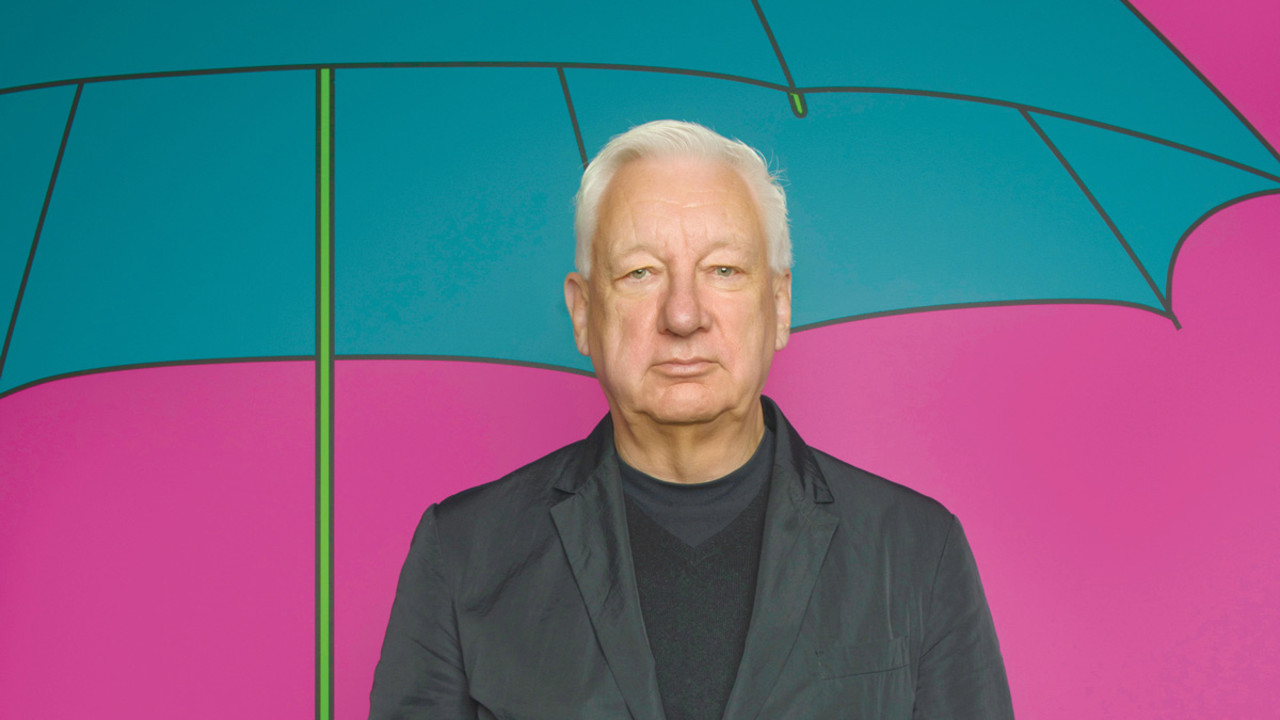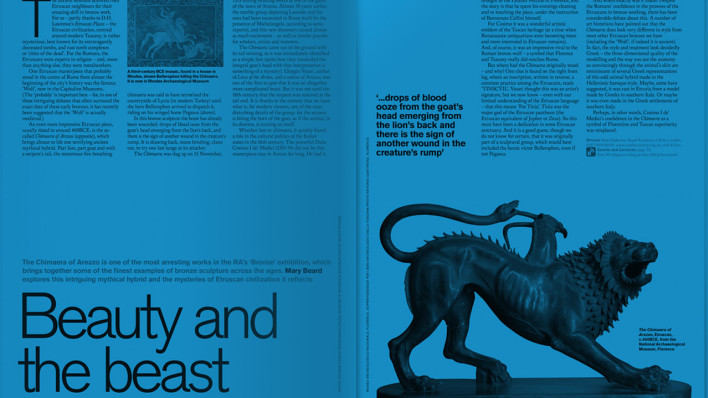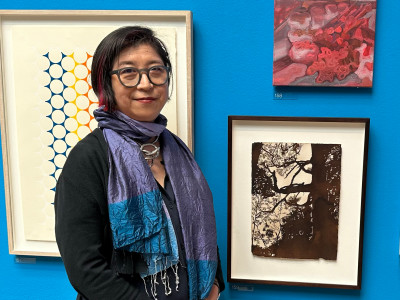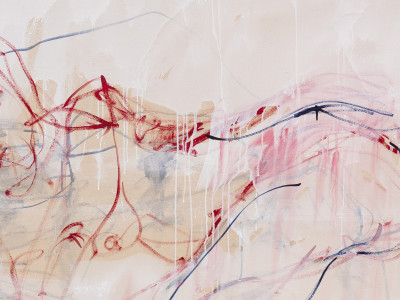
Michael Craig-Martin, man for all seasons
By Eliza Bonham Carter
Published on 20 May 2015
As Michael Craig-Martin RA co-ordinates this year’s Summer Exhibition, the Curator and Head of the RA Schools Eliza Bonham Carter discovers in a new book what makes this leading artist and teacher tick.
From the Summer 2015 issue of RA Magazine, issued quarterly to Friends of the RA.
How welcome it is to hear the voice of the artist. Writing with apparent simplicity in his new book, Michael Craig-Martin RA lays out complex issues with a clear economy of words. This book at its best is close in form to his art.
One of the blessed generation, born during the Second World War and riding the crest of progressive politics and the flowering of higher education that followed, Craig-Martin provides in this book a fascinating record of a life in art, from the tail end of high modernism through to the present day. It is not strictly an autobiography; it encompasses some of the great changes in art and art education during the period.
Despite ending up deeply embedded within the British art establishment, Craig-Martin – Irish, but raised and educated in the US – has an international perspective that has allowed him to retain a useful, outsider’s view. His involvement with key moments of the post-war period allows the reader an insight into the world of art from all angles – the studio, the seminar room and the exhibition space. This is not a book to go to if you seek enlightenment on the psychological imperatives of the artists of each moment, as its characters are left as outlines. There are anti- climactic moments when an argument is built only to be left hanging, but do not let this put you off.

The section on his studies at Yale is a revelation. Here he describes the last moments of the direct influence that the Bauhaus had on American art teaching, through the courses designed by Josef Albers, then at Yale but earlier a key contributor to the German art school. This throws light not only on a touchstone of Craig- Martin’s own practice, but also on the work of a generation of highly influential artists who went through Yale, including Brice Marden, Eva Hesse and Richard Serra Hon RA.
The importance of Bauhaus was that it provided an alternative to the academy as a model for the teaching of art. For centuries the academic system had taught art through drawing from the classical cast and the life model; it was solely focused on the fine arts and held painting at the pinnacle. The Bauhaus, established in 1919 by Walter Gropius, aimed to look forward not back, to develop a new and modern sense of beauty which disregarded the distinction between craft and the fine arts and where function was the prime concern. Craig-Martin’s life as an artist and teacher embodies that shift in art away from the academic model. His route is Duchamp, Bauhaus and conceptualism (he would argue perceptualism), then Goldsmiths, where he taught an emerging generation of Young British Artists including Damien Hirst, Sarah Lucas and Fiona Rae RA. A key element of the book, of course, is Craig-Martin’s time at Goldsmiths.
He settles some very English scores in brilliant passages on the distinction between 'art' and 'skill'
It’s a publication that is closer to a handbook than a narrative or a thesis. Perhaps in discreet reference to the Essays of Montaigne each chapter, is titled with a repeated "On..." – "On Drawing", "On Colour" etc – giving Craig-Martin the freedom to range across subjects and modes of thinking, from the philosophical to the anecdotal, while also allowing for the aphoristic, as well as extended passages. In ten lines he exposes the wonder of the artifice of line drawing. He settles some very English scores in brilliant passages on the distinction between "art" and "skill", notably in a short chapter, "On Life Drawing". Other high points include sections on Minimalism, which produced, in his words, "objects of charged neutrality".
His approach is not unlike that of an artist in the studio, finding the right form for an idea. In doing so Craig-Martin builds a sense of the process and attitude he has brought to making art, as well as a compelling argument for the value of the art school as a model and the vitality of its contribution to the development of new thinking.

Available in the RA Shop
On Being an Artist is part memoir and part instructional guide. It is a fascinating mix of reminiscence, personal philosophy, anecdote, self-examination, and advice for the budding artist. Composed in a series of short episodes, he reflects on the many ideas, events and people that have inspired and shaped him throughout his life, providing valuable lessons to anyone wishing to know what it means to be an artist today.
£22.95
Read an online extract from On Being an Artist.
Hear Michael-Craig Martin in conversation with Tim Marlow.
Eliza Bonham Carter is Curator and Head of the Royal Academy Schools.

Enjoyed this article?
As well as free entry to all of our exhibitions, Friends of the RA enjoy one of Britain’s most respected art magazines, delivered directly to your door.
Why not join the club?


